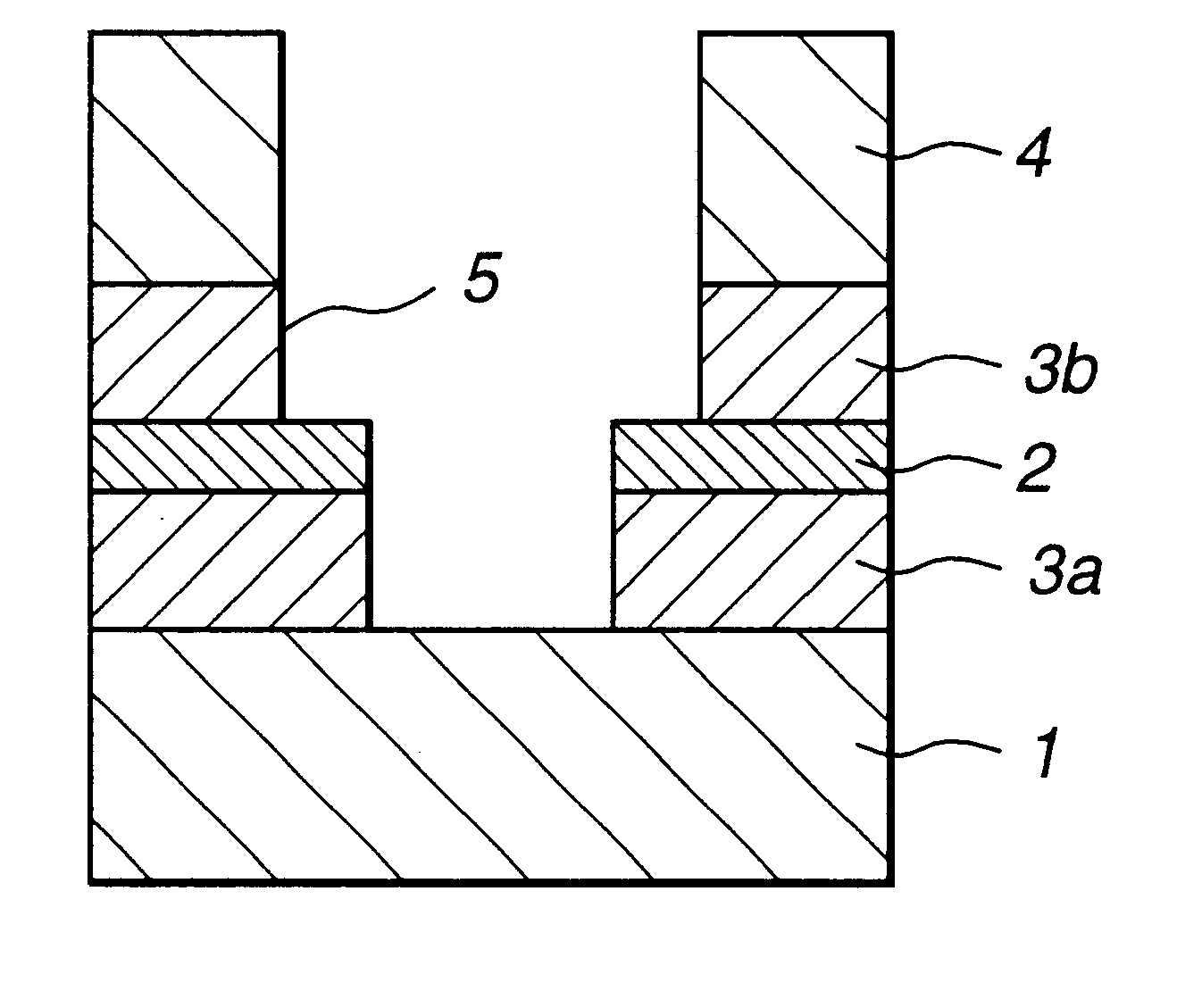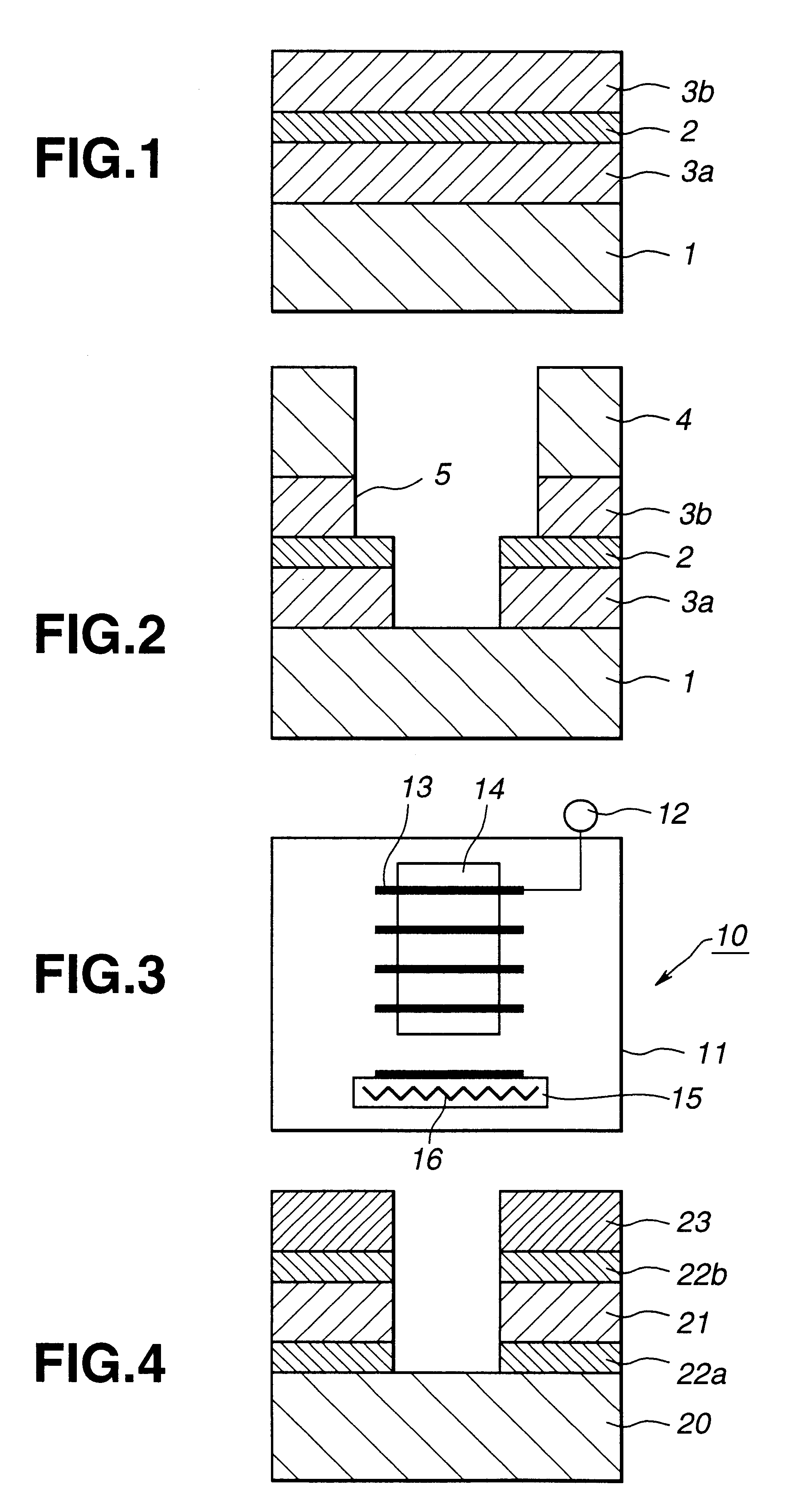Method for stripping organic based film
a technology stripping method, which is applied in the field of organic based film, can solve the problems of increasing the -layer capacitance, the increase of the signal delay time, and the manufacture of such high-integrated ultras
- Summary
- Abstract
- Description
- Claims
- Application Information
AI Technical Summary
Benefits of technology
Problems solved by technology
Method used
Image
Examples
Embodiment Construction
Referring to the drawings, preferred embodiments of the method for stripping an organic film according to the present invention will be explained in detail.
The method for stripping the organic film according to the present invention is used for stripping an organic film formed on a layered unit having an organic low dielectric constant insulating film. In the present invention, the layered unit having the organic low dielectric constant insulating film includes a pair of organic low dielectric constant insulating films 3a, 3b formed on a lower interconnection film 1 for sandwiching a Sl.sub.3 N.sub.4 film 2 in-between.
With the layered unit constructed as described above, an organic film 4 is formed to a pre-set shape on the upper organic low dielectric constant insulating film 3b, and a connection hole 5 is formed using this organic film 4 as a resist mask. This connection hole 5 is formed by boring in the layered unit exposed from the organic film 4 to a depth sufficient to expose ...
PUM
| Property | Measurement | Unit |
|---|---|---|
| dielectric constant | aaaaa | aaaaa |
| dielectric constant | aaaaa | aaaaa |
| temperature | aaaaa | aaaaa |
Abstract
Description
Claims
Application Information
 Login to View More
Login to View More - R&D
- Intellectual Property
- Life Sciences
- Materials
- Tech Scout
- Unparalleled Data Quality
- Higher Quality Content
- 60% Fewer Hallucinations
Browse by: Latest US Patents, China's latest patents, Technical Efficacy Thesaurus, Application Domain, Technology Topic, Popular Technical Reports.
© 2025 PatSnap. All rights reserved.Legal|Privacy policy|Modern Slavery Act Transparency Statement|Sitemap|About US| Contact US: help@patsnap.com


